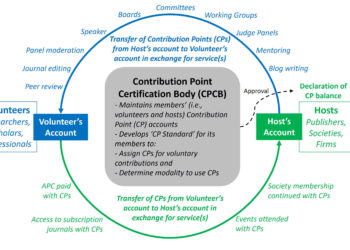
A few years ago, at a meeting with another publisher, I talked about how I was trying to treat publishing more as a software exercise than a hardware exercise — instead of focusing on books and journals as fixed information hardware (like another pressing of a CD used to be), treat it as an integrated version of a book, susceptible to revision with the potential for flexible deployments into specialized environments.
Now, O’Reilly Media has achieved that very admirable feat, and with a very appropriate genre of book — the software manual. Called, “Learning Rails: Live Edition,” the book’s author updates it regularly as fixes and changes occur, and purchasers are notified when major updates are available:
O’Reilly Live Edition books give you access to updates to topics in between editions of a book. A Live Edition is an electronic version of the book that is updated when there is a significant change to the software or technology the book covers, keeping you on top of .X releases or major fixes.
Doing this with a software manual is natural, as the book’s update path matches the software’s update path. But the concept can be applied to many things — a “live edition” of the Guinness Book of World Records 2010 might make sense and increase loyalty.
O’Reilly is starting with electronic files for its updates, but is also contemplating print on demand solutions.
This approach is somewhat familiar to journal publishers, but we still rely on an old-fashioned method (in most cases) of issuing errata and corrections and publishing letters to the editor in order to update reports. If journals were to adopt an approach like this, they would become hybridized reference works publishers. And is that something they should consider?
Errata and fixes are sources of shame to journal publishers, but should they be? Why not embrace the preponderance of evidence that no editor, editorial process, or human intelligence is sufficient to catch all errors, know all angles, and encompass all knowledge of a subject? Why not do what O’Reilly is doing — making a liability into an asset? Their entry on the Tools of Change blog puts it well:
Live Editions follow a different process. Instead of a long wait for a slow new edition, the model is “release early and often.” Authors can quickly respond to reader feedback and errata immediately, rather than filing it away for a reprint or a new edition.
Technical publishers have been doing their own version of this for years, mainly by keeping updated PDFs on their Web sites. But the integration and formalization of the O’Reilly approach takes it a step further. By acquiring customer email addresses, O’Reilly is able to reach out to readers. And by turning each author into an edition shepherd, O’Reilly is keeping expertise on the job for longer.
Aside from any technical or editorial achievement here, there is the marketing achievement — the “live editions” moniker is pretty effective, and O’Reilly is building on its reputation as an innovative publishing company. Smart.
There are definitely implications for copyright, reprints, distributors, and so forth. But, overall, this seems like a nice way to make books better, and potentially a reason for journal publishers to reflect on their own hesitancy to become “live edition” publishers.
It’s a small advance, but an interesting one. Are integrated editions that extend the useful lives of books a good way to add value and entice readers?
Discussion
2 Thoughts on "Books As Software — O’Reilly Makes It Happen"
The obvious question here, from a publisher’s viewpoint, is how does one motivate/compensate the author for what’s essentially an endless task of continuous work? Keeping things up to date is a constant issue for a science publisher. But the majority of our books are written by working scientists and it’s difficult for them to set aside the time required to write the first version of the book. Asking them to make this into an ongoing process is probably a non-starter. Are the authors paid by the update? Are they on salary with O’Reilly? Or is there just an assumption that a continuously-updated book will sell more copies than a static one, meaning more royalty earnings for the author? If so, it will be interesting to see if this is the case. As I recall, at one point O’Reilly offered free downloads of book updates to buyers of print versions and very few actually made the effort to get them. Do the economics of this outweigh just doing a new edition of a book, which will be bought both by new customers and by customers who bought the previous edition (and offers the author a set period of work rather than a continuous period)?
As for journals, I think this goes against the very concept of what a journal is supposed to represent, the historic record of scientific discovery. If Scientist X is found to have committed fraud, should he be able to make that fraudulent paper disappear? Or change an inaccurate theory when later evidence is discovered? There’s also the question of motivation for those not looking to cover something up–if a new discovery is made, isn’t that worthy of publishing a new paper? Isn’t that a better career move, adding a new publication to one’s CV rather than just altering an old one?
I run a biology methods journal, and keeping the methods up-to-date is a big issue for us. We try to do this through a couple of mechanisms. First, each article has a space for comments, discussions or updates. We’ve had a few instances where an author or a reader has added new additional information as the ideal conditions for a technique have developed over time. More often though, we just publish an updated version of the method, and add a notice on the earlier version that an updated article is available (with a direct link). These seem like reasonable compromises that don’t require erasing history.
![Reblog this post [with Zemanta]](http://img.zemanta.com/reblog_e.png?x-id=2986aaa3-f23a-48f2-a664-948b74a57448)


